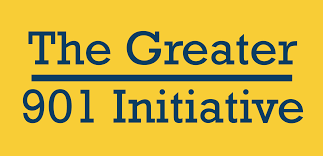From Governing:
Implementation plans for government programs are as diverse as the constituents that they are meant to serve. What led to extraordinary results and outcomes in one city or state may cause the program to fall flat on its face in another jurisdiction. But while every program needs to be tailored for its particular setting, there are some key lessons, gleaned from the experiences of previous efforts, that can increase the chances of success and help to deliver more public value.
This list of 10 questions can be used to chart a path for a new initiative, identify how a faltering program can get back on track, or look back and see why a program hit the mark or failed short of the finish line.
1. Do you really understand the outcome you are trying to achieve? As an organization, you must be able to clearly articulate how the world will be different if your program succeeds. Not only that, you need to be able to explain how others tried something similar and describe what they achieved (or failed to achieve) so you can build on their ideas while avoiding their pitfalls.
2. Do you know how your program affects other programs? After an outcome is identified or as a policy is defined, being able to articulate how it will enhance, impact or render obsolete other internal and external initiatives will assist in allowing for more accurate measurement of your program’s impact, planning resources and timing, and knowing how to communicate with stakeholders.
3. Have you thought about risk? Identifying potential risks and issues will ultimately help your program not only create mitigation plans but will allow for a more realistic implementation plan from the start. Identifying potential risks can also help to redefine the program outcomes and introduce the need for more input from other perspectives and experts not previously included.
4. What is critical for success and what is “nice to have”? When budgets get tightened, timelines get cut or unforeseen events throw a wrench in your plan, knowing what can be cut and what needs to be protected can help you articulate the importance of continued support, overcome opposition and communicate the value of your efforts. In a time when no program is safe from scrutiny, leaders must know what is negotiable and what is a deal-breaker.
5. Are the people involved prepared to implement the program? Making sure that they have the resources, training and time to make the program a success and achieve their goals is part of the foundation for continued progress. In addition, those involved at every level need to know how what they are doing on a day-to-day basis will result in the implementation of the larger program.
6. Does your plan identify critical activities, timelines and “owners”? Establishing a transparent project-management structure and plan are keys to accurately tracking performance, enforcing accountability and communicating with stakeholders. A sound plan is also a great way to build momentum, assuage critics and achieve “quick wins” that demonstrate the impact and soundness of the initiative, which can lead toward continued support.
7. Is your organization ready for change? As the plan comes together, leaders need to ensure that everyone involved in implementing it feels invested in its success. This will mean that different tactics are needed for different stakeholders. Developing a plan to effectively communicate and share information, involve those stakeholders in input and feedback, and prepare everyone for the changes at hand are key to overcoming potentially fatal roadblocks.
8. Does your program have a “go-live” message? When a program is launched, internal and external stakeholders need to be informed in ways tailored toward their specific needs, concerns and roles. Conducting simulations or tests for a program launch are great ways to identify previously unknown factors that could negatively impact a full rollout and understand how messaging can be refined.
9. Is your program designed to be measured? At every state of implementation, programs need to have mechanisms in place to monitor performance and success toward the specific target outcomes. Taking this further, program leaders need to be able to articulate what will happen if performance indicators are not being met and at what point specific actions will be put in place to correct the program’s trajectory.
10. Do you know what success looks like? Specific indicators need to have been identified that are recognizable when a program reaches its goal. This will vary for every program — for example, the number of driver’s licenses processed, students signed-up for an after-school program or a decline in the crime rate in a specific area. Knowing when to celebrate success or identify when a program has failed to hit the mark is necessary to drive innovation and motivate stakeholders to stay invested.
While not a blueprint in itself for success, developing clarity and confidence in these points will help develop an understanding for why other programs fail, how your program can be strengthened and how to improve the chances for success in the future. Regardless of the scale, scope or setting of a program, hurdles can turn into unsurmountable mountains or opportunities to let an organization shin



